5-HT3A -driven green fluorescent protein delineates gustatory fibers innervating sour-responsive taste cells: A labeled line for sour taste?
- PMID: 28316078
- PMCID: PMC5933927
- DOI: 10.1002/cne.24209
5-HT3A -driven green fluorescent protein delineates gustatory fibers innervating sour-responsive taste cells: A labeled line for sour taste?
Abstract
Taste buds contain multiple cell types with each type expressing receptors and transduction components for a subset of taste qualities. The sour sensing cells, Type III cells, release serotonin (5-HT) in response to the presence of sour (acidic) tastants and this released 5-HT activates 5-HT3 receptors on the gustatory nerves. We show here, using 5-HT3A GFP mice, that 5-HT3 -expressing nerve fibers preferentially contact and receive synaptic contact from Type III taste cells. Further, these 5-HT3 -expressing nerve fibers terminate in a restricted central-lateral portion of the nucleus of the solitary tract (nTS)-the same area that shows increased c-Fos expression upon presentation of a sour tastant (30 mM citric acid). This acid stimulation also evokes c-Fos in the laterally adjacent mediodorsal spinal trigeminal nucleus (DMSp5), but this trigeminal activation is not associated with the presence of 5-HT3 -expressing nerve fibers as it is in the nTS. Rather, the neuronal activation in the trigeminal complex likely is attributable to direct depolarization of acid-sensitive trigeminal nerve fibers, for example, polymodal nociceptors, rather than through taste buds. Taken together, these findings suggest that transmission of sour taste information involves communication between Type III taste cells and 5-HT3 -expressing afferent nerve fibers that project to a restricted portion of the nTS consistent with a crude mapping of taste quality information in the primary gustatory nucleus.
Keywords: chemesthesis; citric acid; serotonin receptor; solitary tract; taste bud; trigeminal.
© 2017 Wiley Periodicals, Inc.
Figures

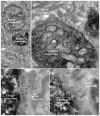
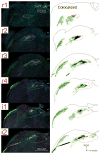
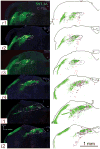

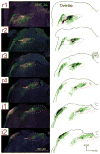
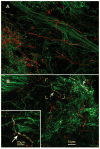
Similar articles
-
The Role of 5-HT3 Receptors in Signaling from Taste Buds to Nerves.J Neurosci. 2015 Dec 2;35(48):15984-95. doi: 10.1523/JNEUROSCI.1868-15.2015. J Neurosci. 2015. PMID: 26631478 Free PMC article.
-
Immunocytochemical organization and sour taste activation in the rostral nucleus of the solitary tract of mice.J Comp Neurol. 2017 Feb 1;525(2):271-290. doi: 10.1002/cne.24059. Epub 2016 Aug 11. J Comp Neurol. 2017. PMID: 27292295 Free PMC article.
-
Transsynaptic transport of wheat germ agglutinin expressed in a subset of type II taste cells of transgenic mice.BMC Neurosci. 2008 Oct 2;9:96. doi: 10.1186/1471-2202-9-96. BMC Neurosci. 2008. PMID: 18831764 Free PMC article.
-
New insights into the signal transmission from taste cells to gustatory nerve fibers.Int Rev Cell Mol Biol. 2010;279:101-34. doi: 10.1016/S1937-6448(10)79004-3. Epub 2010 Jan 29. Int Rev Cell Mol Biol. 2010. PMID: 20797678 Review.
-
Coding channels for taste perception: information transmission from taste cells to gustatory nerve fibers.Arch Histol Cytol. 2006 Dec;69(4):233-42. doi: 10.1679/aohc.69.233. Arch Histol Cytol. 2006. PMID: 17287578 Review.
Cited by
-
Taste Bud Connectome: Implications for Taste Information Processing.J Neurosci. 2022 Feb 2;42(5):804-816. doi: 10.1523/JNEUROSCI.0838-21.2021. Epub 2021 Dec 7. J Neurosci. 2022. PMID: 34876471 Free PMC article.
-
Recent advances in taste transduction and signaling.F1000Res. 2019 Dec 17;8:F1000 Faculty Rev-2117. doi: 10.12688/f1000research.21099.1. eCollection 2019. F1000Res. 2019. PMID: 32185015 Free PMC article. Review.
-
Give-and-take of gustation: the interplay between gustatory neurons and taste buds.Chem Senses. 2024 Jan 1;49:bjae029. doi: 10.1093/chemse/bjae029. Chem Senses. 2024. PMID: 39078723 Free PMC article. Review.
-
The elusive cephalic phase insulin response: triggers, mechanisms, and functions.Physiol Rev. 2023 Apr 1;103(2):1423-1485. doi: 10.1152/physrev.00025.2022. Epub 2022 Nov 24. Physiol Rev. 2023. PMID: 36422994 Free PMC article. Review.
-
Function, Innervation, and Neurotransmitter Signaling in Mice Lacking Type-II Taste Cells.eNeuro. 2020 Feb 3;7(1):ENEURO.0339-19.2020. doi: 10.1523/ENEURO.0339-19.2020. Print 2020 Jan/Feb. eNeuro. 2020. PMID: 31988217 Free PMC article.
References
-
- Archer S, Li TT, Evans AT, Britland ST, Morgan H. Cell reactions to dielectrophoretic manipulation. Biochem Biophys Res Commun. 1999;257:687–698. - PubMed
-
- Bae YC, Oh JM, Hwang SJ, Shigenaga Y, Valtschanoff JG. Expression of vanilloid receptor TRPV1 in the rat trigeminal sensory nuclei. J Comp Neurol. 2004;478:62–71. - PubMed
MeSH terms
Substances
Grants and funding
LinkOut - more resources
Full Text Sources
Other Literature Sources
Molecular Biology Databases
Miscellaneous

